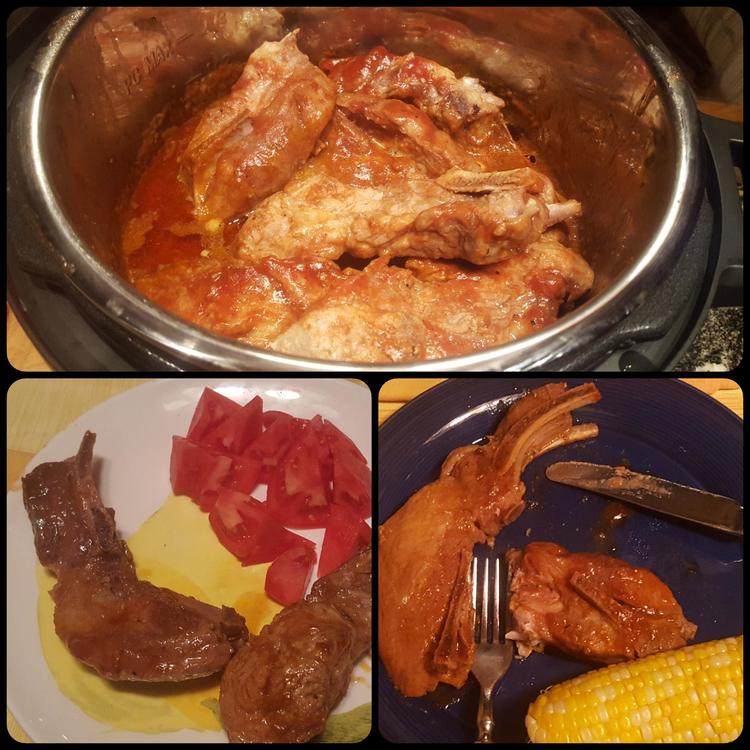I'd call tonight's dinner a qualified success.
We used the set-it-and-forget-it philosophy to spend time on chores we did not want to do as well as a bicycle ride that we did want to do. At some point after 8 hours of slow cooking we could see a temperature stratification: meat at the bottom of the pot was around 150 - 160; meat at the top was around 125 - 140. My darling removed all the meat from the pot and restacked the ribs to invert the lot. An hour later, the ribs that had previously registered in the 150 - 160F range were down into the 120 - 130F range, whereas the ribs from the original top layer were heating up. I still don't understand how this could have happened, but there it is: it appears that heat transmission isn't great from the bottom of the pot, where the heat element is, to the rest of the pot, unless there's a generous amount of liquid (in this case, BBQ sauce) to fill in gaps and transmit heat.
The meat seemed tender at all levels, but there were questions about the desired temperature and the food safety implications. (Much to my surprise, he was the one worried about food safety.) We discussed options: add more liquid for better heat transmission; crank up the temperature setting; try pressure-cooking to finish.
We turned the Custom Temperature up to 175 (roughly the low-level Slow Cooker setting, but who's counting) for 10 or 20 minutes, then lost patience/faith in the process. We sealed the IP and set it to Pressure Cook on High for 10 minutes. At about the time it reached full pressure, it announced that it was burning. I turned off the program, and let it all cool down naturally.
Top pic: the contents of the pot. Bottom pic: our dinners. (Never mind pretty plating, we were tired and hungry.)
Some of the meat was almost overdone. All of it was tender; most of it was juicy, but the drier segments made us think that it was slighly overcooked.
Was this better than our recent country-style-rib attempts? Yes. Was this better than memory serves from 20 years ago and many frustrations since? Well, no...but maybe it came close. Will we try it again this way next time? No: we'll either up the slow-cooker temperature from the outset, start the cooker earlier for a much longer time, or pressure-cook (or steam) it first.




